
Selecting the right dehumidifier is a minefield for many people as brands send out conflicting information trying to persuade consumers to buy. Do you need a desiccant dehumidifier or a compressor model? Our sales are fairly even between the two technologies which puts us in an unique situation to provide unbiased advice.
There are two types of dehumidifiers: desiccant and compressor. At Meaco, we manufacture and sell an equal amount of both types of technologies, so we are uniquely placed to give unbiased advice on which would be best for your needs. Both types of appliance will help prevent mould and damp by extracting water.
Because there are two different types of dehumidifier technology on the market, confusion comes when someone has to decide which one to buy. Below is a cut-and-keep guide to making the right choice.
Generally speaking, a compressor dehumidifier is suitable for a room with an air temperature above 10°C, and a desiccant dehumidifier is more suited for temperatures below 10°C.
So, there are 6 key factors which may help you decide whether a desiccant or compressor dehumidifier suits you best:
- What is the temperature of the space you want to use your dehumidifier?
- Will a dehumidifier keep the room warm and dry?
- Can a dehumidifier dry laundry?
- How much does a dehumidifier weigh and how easy is it to move around?
- How much does a dehumidifier cost to run?
- And how much noise does a dehumidifier generate?
Compressor dehumidifiers are the established way of doing things having been around for 50+ years. They work by creating a cold surface and when the warm, damp air from within the room comes into contact with the cold surface, condensation forms, and the water is removed from the air. Jump to the comparison table.
A desiccant dehumidifier has no compressor and does not use a cold surface to extract the excess moisture from the air. Instead, it has a desiccant wheel that absorbs the moisture from the air, in a similar way to a sponge. The desiccant is regenerated by an internal heater and fan so that the process can be repeated time and time again. Jump to the comparison table.
Main applications to consider when choosing between dehumidifier types:
Which type of dehumidifier is best for cold or cooler conditions (temperature is below 10°C)? When the room air temperature is likely to fall below 10°C, for example in a conservatory, garage or colder home, a desiccant dehumidifier is the most suitable type. This is because, desiccant dehumidifiers maintain a consistent performance, regardless of the surrounding temperature.
Compressor dehumidifiers, on the other hand, need the inside of the machine to be colder than the air within the room in order for it to perform correctly. So, the colder the room, the harder the dehumidifier has to work to create that cold surface. As the temperature starts to fall down towards 10°C, the chances are that the inside of the dehumidifier will get close to freezing, increasing the chances of ice forming on the dehumidifier’s cooling coils. Below 10°C, compressor dehumidifiers are programmed to spend more and more of their time defrosting themselves rather than dehumidifying.
Pictured: Desiccant dehumidifiers are recommended for cold rooms although the MeacoDry Arete® One compressor dehumidifier also works well.
As a rule of thumb we would always recommend a desiccant dehumidifier if the room temperature is below 10°C, a desiccant dehumidifier or a large compressor dehumidifier (either a 20L or 25L) if the room temperature is between 10°C and 15°C and any type of dehumidifier, including a small compressor dehumidifier (10L or 12L), if the room temperature is above 15°C.
Below 10°C: desiccant dehumidifier only
Between 10°C and 15°C: desiccant dehumidifier or a large compressor dehumidifier (20L or 25L)
Above 15°C: desiccant dehumidifier or any size compressor dehumidifier (10L, 12L, 20L or 25L)
Small compressor dehumidifiers used in rooms below 15°C and large compressor dehumidifiers used in rooms below 10°C will not perform well. Having said that, you will see that both of the larger MeacoDry Arete® One dehumidifiers are Which? Best Buys and in their reviews found that they both performed better than expected at 10°C and that the 25L model was exceptional. Desiccant dehumidifiers (such as the Meaco DD8L) will perform the same regardless of the room temperature.
Desiccant dehumidifiers are recommended for cold rooms although the Arete® One 20L and 25L compressor dehumidifiers also work well, as you can see here in the classic car garage.

Which type of dehumidifier is best to keep your house warm and dry?
Most customers are looking for a dehumidifier to keep their home condensation free. Or to tackle the problem of too much humidity in the air causing damp and mould. They need a dehumidifier that will take excess moisture out of the air, and some also like it to warm up the room where it’s operating.
Both compressor and desiccant dehumidifiers will warm the air up slightly – the air naturally warms up as it passes through the dehumidifier. The air coming out of the compressor dehumidifier will be about 2°C warmer. This will not warm up the room the dehumidifier is being used in (and will actually feel cold to touch! This is because the air is moving). However,the air coming out of a desiccant dehumidifier will be about 10-12°C warmer and will have a significant impact on the temperature of the room its being used in – think of it as a 2 in 1 dehumidifier and heater!
So, if you are putting the dehumidifier into a hallway that is on the chilly side, the desiccant dehumidifier makes sense. If the hallway is already nice and toasty then the compressor dehumidifier is the correct option.
So, for a cold room – the winner is desiccant. For a warm room – the winner is compressor.
Is a desiccant dehumidifier good for drying laundry?
Drying washing indoors is one of the most common reasons why homes suffer from condensation, damp and mould. Laundry dries because the air around it is drier than itself. So the washing gives up the moisture in order to be in equilibrium with its surroundings. However, the moisture from the laundry has to go somewhere and this leads to condensation, damp and mould. Using a dehumidifier not only creates a dry atmosphere and blows air across the wet washing speeding up its drying time, it also captures the excess moisture from the clothes and prevents it from causing problems in your house such as condensation, damp or mould.
Drying washing using a dehumidifier works in the same way as drying the laundry on a line in the summer – honest! The laundry dries fastest outside on a dry, warm, windy day. And the laundry inside will dry faster if the warm, dry air created by the dehumidifier hits the clothes.
Both desiccant and compressor dehumidifiers are good at drying laundry. A desiccant dehumidifier tends to have a larger top speed air flow than a compressor dehumidifier and the air coming out of the dehumidifier is warmer (giving it that extra edge).
The DD8L Zambezi has a unique low energy drying cycle for laundry which makes it the best desiccant for drying laundry, as well as a lourve which directs the airflow onto the clothes. Although compressor dehumidifiers don’t have the additional heat they are cheaper to run and therefore can dry a load of laundry at less of a cost than a desiccant. Many compress dehumidifiers, including our MeacoDry Arete® One range, have dedicated laundry modes to dry your laundry in 6 hours.
For drying washing, the winners are the DD8L Zambezi and for low cost drying the MeacoDry Arete® One range.
Pictured: Desiccant dehumidifiers can be used to dry washing cost-effectively.
Product features to consider before purchasing:
Planning on moving the dehumidifier around the house? You’ll need to know which weighs less, a desiccant or compressor dehumidifier.
However, there may be times when you want to move the dehumidifier around. For example, you might have built-in wardrobes in a bedroom that are prone to mould growth. You might have the dehumidifier upstairs on the landing but need to move it downstairs to dry the washing, or you might like to move it into a conservatory now and again or use it to dry out a poorly ventilated bathroom.
Compressors add about 6 kilograms to the weight of a dehumidifier, so carrying a desiccant dehumidifier around is a lot easier than carrying a compressor dehumidifier around. However, most compressor dehumidifiers come with castors, making them more portable.
Carrying your dehumidifier – the winner is desiccant.
Energy Consumption – how much does a dehumidifier cost to run?
Customers are understandably interested in how much it costs to run a dehumidifier. Compressor dehumidifiers are in general cheaper to run. However, a desiccant releases its extra energy as heat. So there will be a cost to run your dehumidifier, but you are getting heat back into your home, meaning you can reduce your central heating accordingly. And that has a positive knock-on effect on your bills. You have to decide if you want or need this additional warmth or if you just want the cheapest dehumidifier to run.
For example, in our compressor range, we have the Meaco Low Energy 12L Dehumidifier, running at just 4p / kWh as well as our MeacoDry ABC 12L, running at just 4p / hour based on 26.35p / kWh. That means, you can have the dehumidifier on 24 hours a day, maintaining your home humidity levels for just 96p per day.
So, for low energy and low cost operation – the winner is compressor dehumidifiers.
The good thing is, whichever dehumidifier you choose, a compressor or a desiccant, the dehumidifier will be removing cold, damp air from your home, meaning you don’t have to put your heating on as high – saving you money on your energy bills!
Noise levels – how much noise does a dehumidifier make?
This is an area where dehumidifiers have changed a lot over the past 5-10 years. It used to be the case that a desiccant dehumidifier on low fan speed was your quietest option, but a few years ago the MeacoDry ABC Range changed all of that with 10 and 12l models at just 36dB (close to the sound of a whisper). And then, we changed it again with the new Arete® One 10 and 12L compressor dehumidifiers which are even quieter at 35dB. So you can now buy a dehumidifier that is the quietest and cheapest to run.
For quiet operation, the winner is Meaco ABC 10L and 12L and MeacoDry Arete® One 10 and 12L Dehumidifier and Air Purifier. These dehumidifiers are all a whisper-quiet 35/36dB.
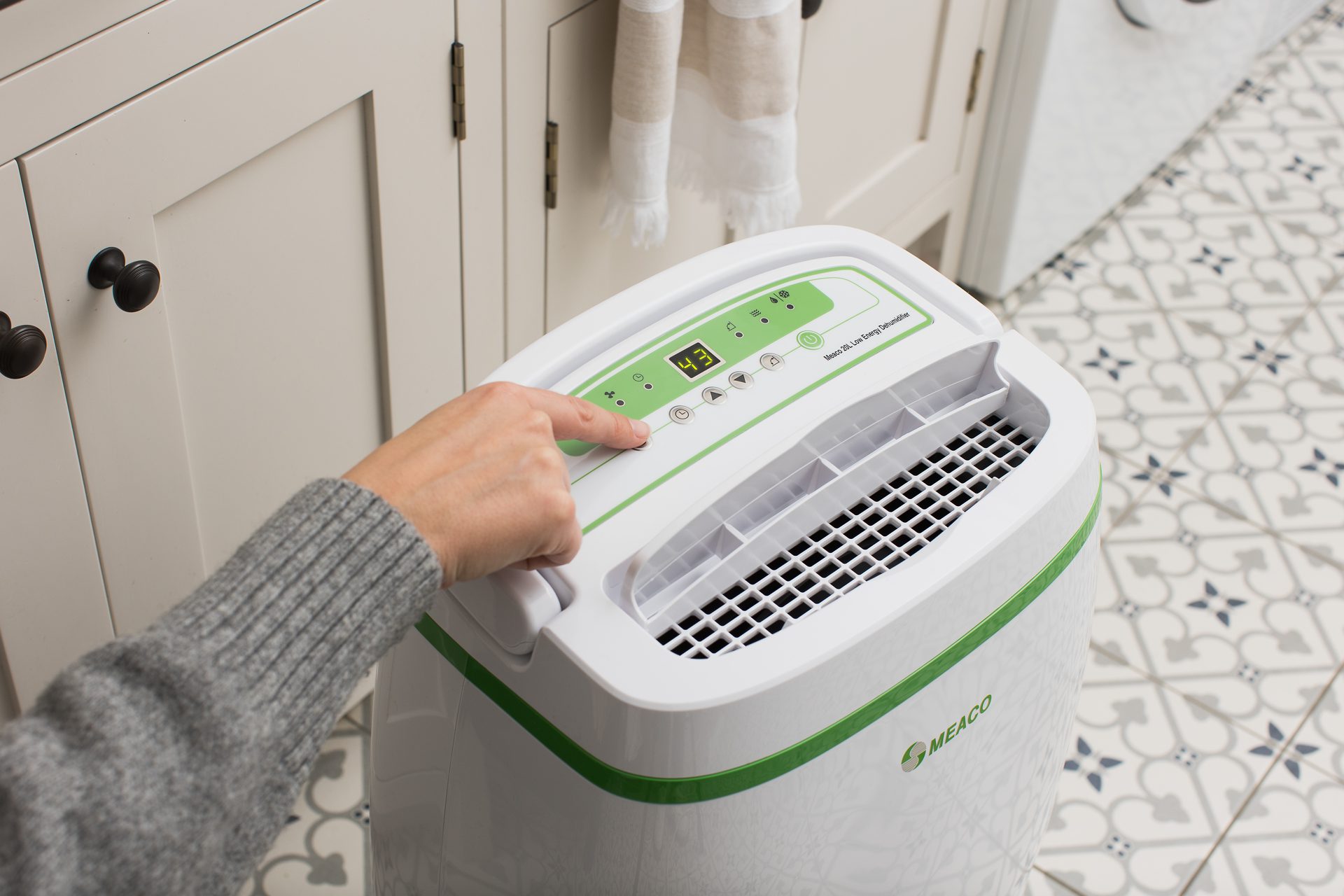
Which Dehumidifiers Can Do More Than Just Extract Moisture, Which Can Double Up As An Air Purifier As Well?
Many dehumidifiers can now be fitted with HEPA filters so they can purify the intake air as well as extracting moisture. At Meaco, we supply medical-grade H13 HEPA filters to selected compressor dehumidifiers. These can retain 99.75% particles as small as 0.3 micrometers in diameter, making it great for people with allergies like hayfever or other respiratory medical conditions such as asthma.
Because of the heat elements and sensitive parts of a desiccant dehumidifier, we do not supply things like HEPA filters. By putting anything which reduces the air intake onto the dehumidifier, we’re reducing its efficiency and can harm the machine. Equally, if things like sawdust from a garage/workshop got into the mechanics, you could be serving a short life sentence for your dehumidifier.
However, compressor dehumidifiers like the MeacoDry Arete® One and Meaco Low Energy range, are supplied with a H13 HEPA filter. It can be easily inserted into the dehumidifier turning it into a combined dehumidifier and air purifier. You can use this as much or as little as you want – the filter doesn’t have to be in the unit all the time, however when it is, the air in your home is being purified of dust, dirt, allergens, mould spores and VOCs! It’s important HEPA filters are replaced when they change colour from white to dark grey, this tends to be around every 3 months.
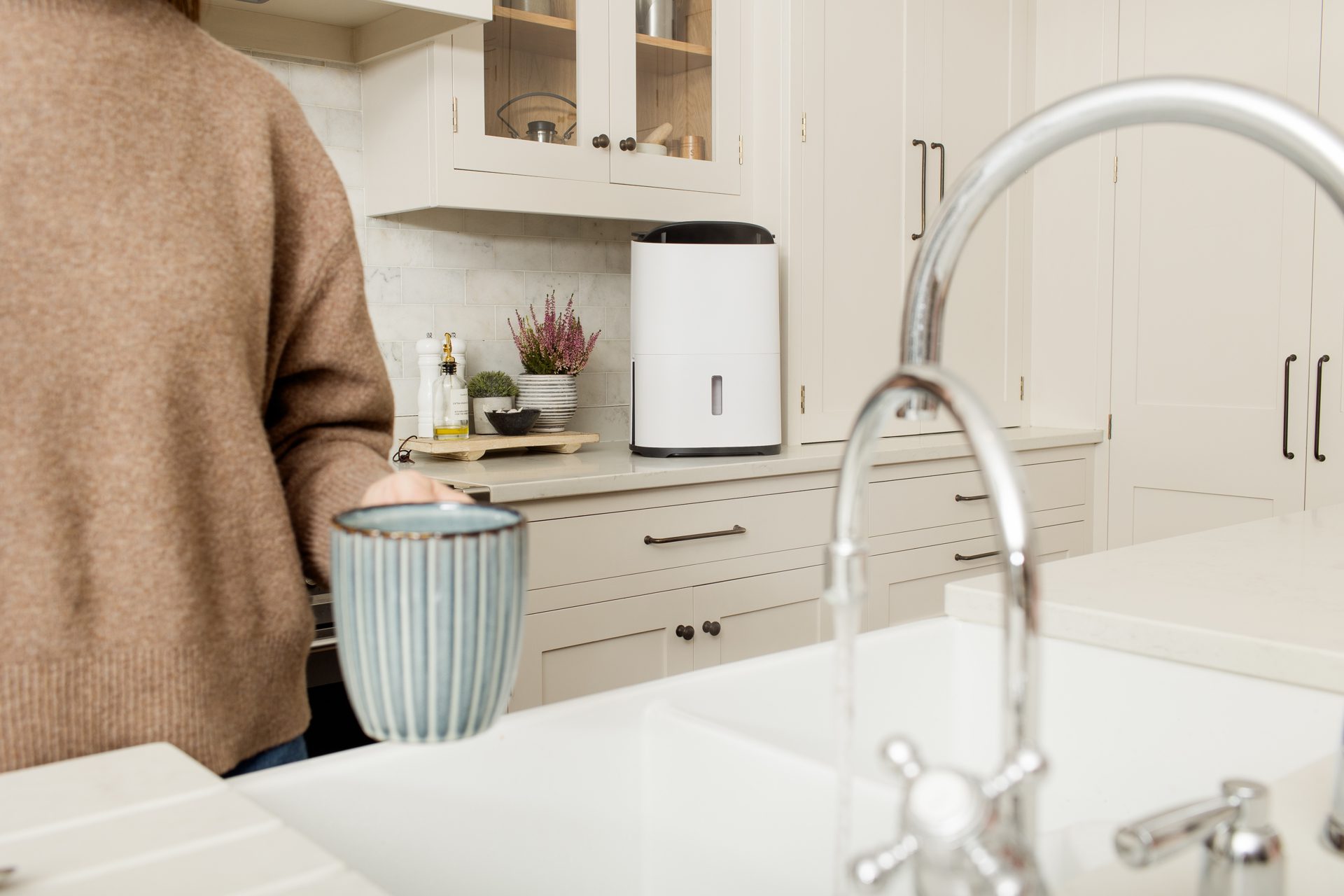
Let’s summarise the desiccants vs compressor dehumidifier debate, each is useful in different applications:
Desiccant
Compressor
Effective in which temperatures:
Desiccant:
Works well in all temperatures and are the recommend dehumidifier below 10°C
Compressor:
Only effective in spaces over 10°C, performs best at 16°C and above
Does it provide heat to the room?
Desiccant:
Yes, desiccants emit some additional warmth which can be useful
Compressor:
No, this does not provide additional heat
Are they effective when drying washing?
Desiccant:
Yes, actually optimal as they extract moisture and add warmth to drying laundry
Compressor:
Yes, these will successfully help you to dry washing indoors
Laundry mode available?
Desiccant:
Most Meaco dehumidifiers come with Laundry Modes. Check the technical specifications for more information.
Compressor:
Most Meaco dehumidifiers come with Laundry Modes. Check the technical specifications for more information.
Which is lighter in weight?
Desiccant:
Lightest and therefore easiest to move
Compressor:
The equivalent sized compressor dehumidifier will weigh an additional 6kg, however lots come with castors
Which has a cheaper cost to run?
Desiccant:
Desiccants are more expensive to run, our MeacoDry DD8L costs 9p / kWh
Compressor:
Compressors are cheaper as a general rule. Our MeacoDry Arete® One 10L costs just 4p / kWh
Which dehumidifier uses less electricity?
Desiccant:
Around 330 watts at 20°C and 60%rh
Compressor:
Between 150-260 watts depending on the size at 20°C and 60%rh
Which generates the lowest noise levels?
Desiccant:
Traditionally quieter, the 8L desiccants in our range are 39 dB
Compressor:
The latest ABC and Arete® dehumidifiers are Quiet Mark accredited, measuring 35dB and above.
Which has the longest lifespan?
Desiccant:
Lifespan is dependent on a lot of factors including the environment and how well the dehumidifier is looked after
Compressor:
Lifespan is dependent on a lot of factors including the environment and how well the compressor is looked after, however, our Arete® range is the only range to come with a free 5 year warranty
Which has the best sizing options?
Desiccant:
Because of the mechanics, desiccants only come in 8L however this is suitable from a 1 bed flat to a 5 bed house
Compressor:
Multiple sizes available for different sized houses
Which can clean the air as well as dehumidify?
Desiccant:
Dehumidify only
Compressor:
Our MeacoDry Arete® One and Meaco Low Energy range are combined dehumidifiers and air purifiers
Best application
Desiccant:
Lower temperatures or places you may want some extra warmth. For example, an unheated conservatory.
Compressor:
Applications over 10C. These are cheaper to run and available in more sizes. Great for home living.
You can see that it is not as simple as many dehumidifier brands make out when they claim that a desiccant dehumidifier – or a compressor dehumidifier is best. This is because they are normally biased towards one or other of the technologies. Hopefully the above will help – but if you are still not sure what’s best for you, give us a call on 01483 234900, email customerservice@meaco.com or comment below and we will be happy to talk it through with you.
Browse our ranges: Compressor Dehumidifiers, Desiccant Dehumidifiers
Products featured: Meaco ABC 12L , Arete® One 10 and 12L Dehumidifier and Air Purifier, Meaco DD8L, Meaco DD8L Zambezi, Meaco Low Energy Dehumidifier 12L




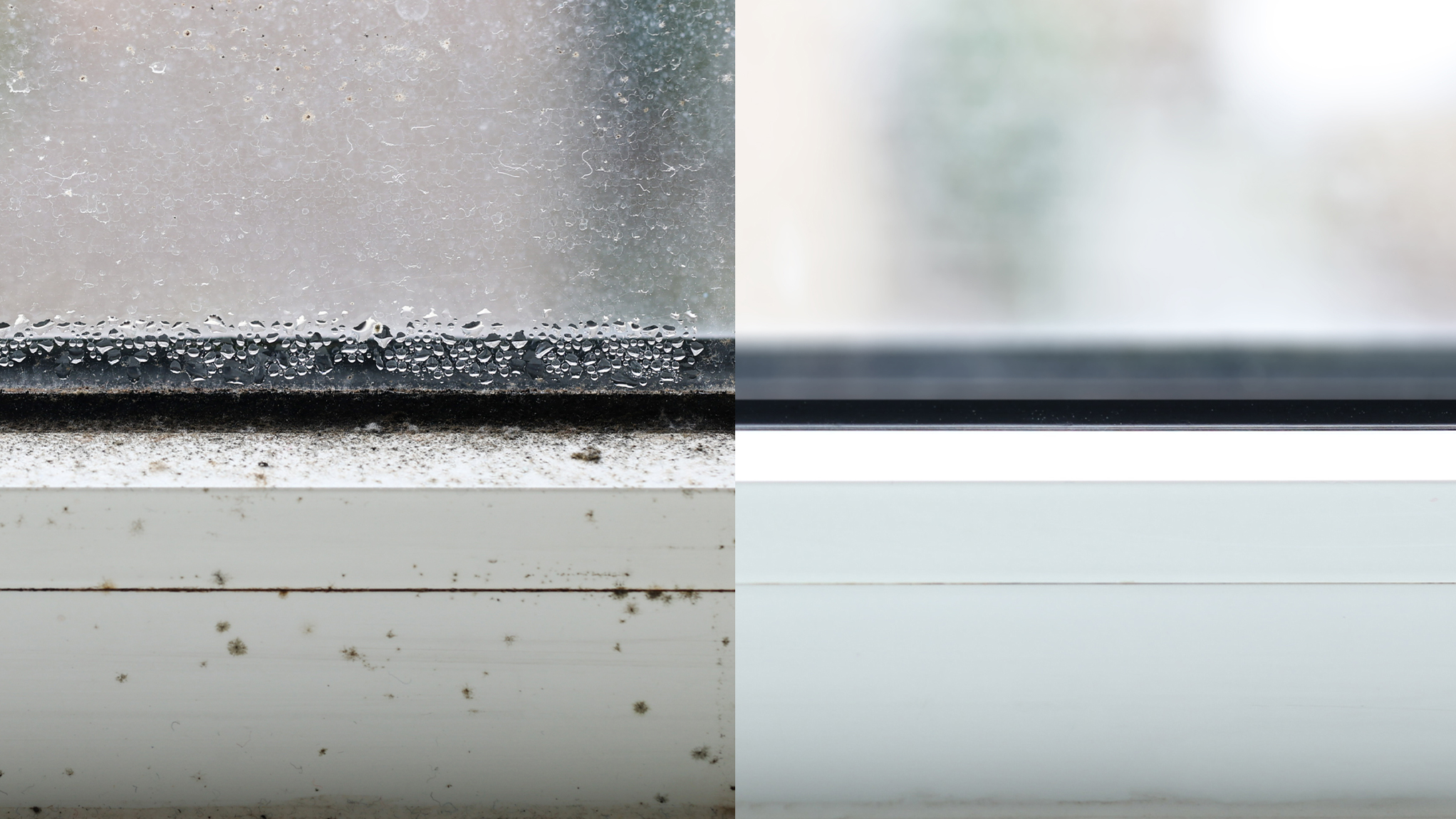

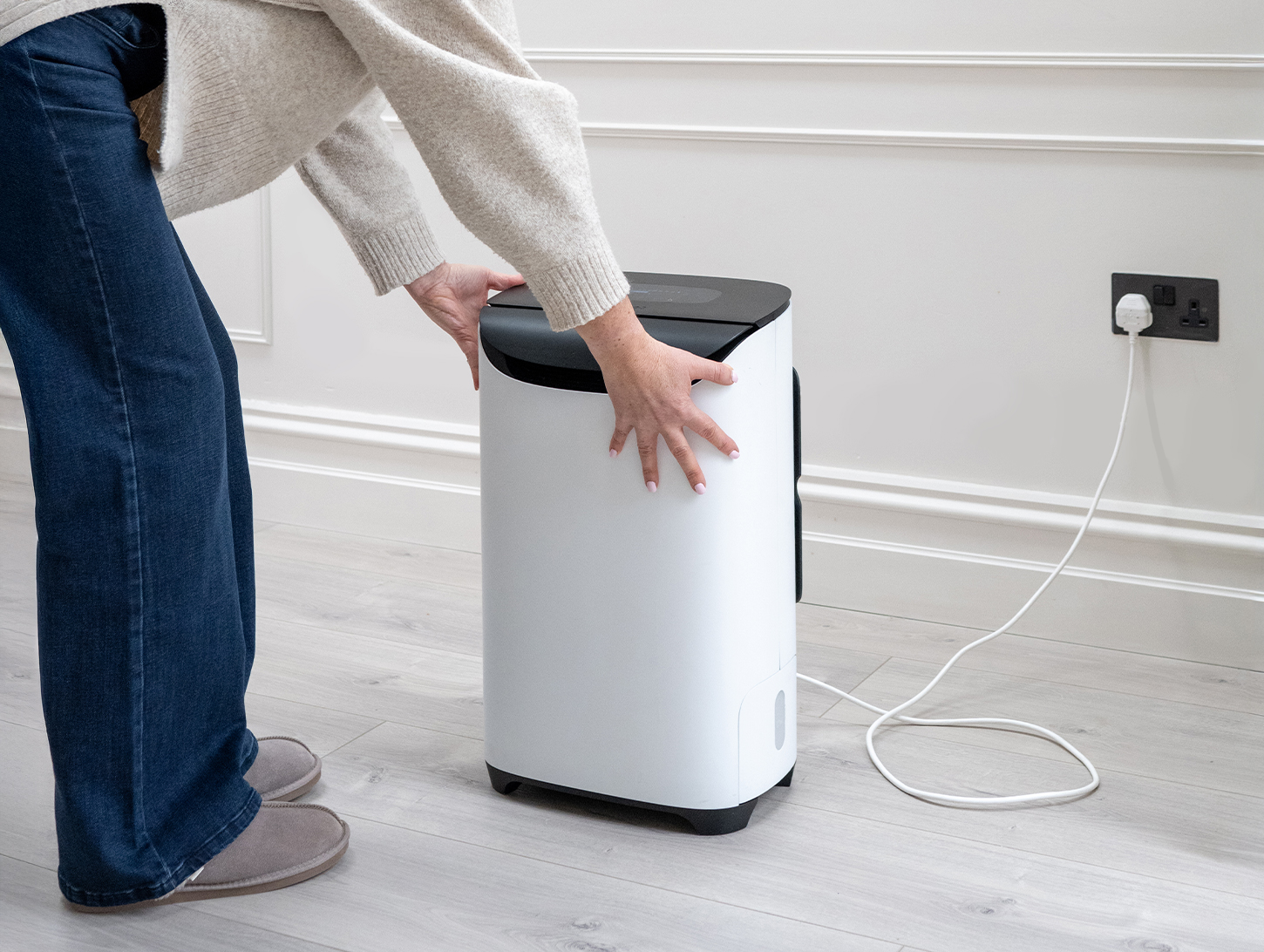
252 responses
Hi I live in a large 4 bed 2 story house. generally I don’t seem to have a problem with dampness apart from in my ensuite, which never seems to dry out for 2 days after a shower. I do often dry clothes elsewhere in the house. The thermostat is never set below 15deg C. Where would I be best to place a dehumidifier, and would I be better off to get a small one just to go into the ensuite? And a larger one to do the rest of the house? Which ones would you recommend?
Thank you
Staurt,
Sounds like the ensuite does not have an extractor fan or any ventialtion. If there are windows in there then open them for 20 minutes after the shower. Drying the washing indoors will contribute to the problem so either dry the washing in the effected bedroom and put the dehumidifier in there to kill two birds with one stone or move the dehumidifier between the two.
An ABC 12L would be best for you.
Chris
Hi, I live on a canal boat in the UK. As you can imagine, being ON the water can make it quite damp and even the walls get condensation at times. We’ve been using beads, packets, etc as power is scarce and super valuable (especially with such little solar power in UK winter) but we are thinking a proper dehumidifier might be a better choice. We bought a £40 one online (it didn’t say which type it is) but it only gets about a teaspoon in 5-6hrs and it makes the room really cold, so I’m assuming it’s a compressor one (from what I’ve read on your article). I’m thinking a desiccant one would be better but I’m concerned about the size and power consumption. We don’t have much floor space so it would need to be small enough to sit on a counter or on the bedside table. In terms of power, the one we’re trying uses 1kW in 48hrs. What would the power use be in comparison to that, for a small desiccant one? Suggestions welcome.
Thank you for your time and advice.
Pierina,
All of the options you describe will not cut the mustard, the type you describe is a peltier and they don’t really work below 16°C. A desiccant will use a minimum of 330 watts when running on half fan speed but will do the job properly. For 330 watts you will get 3 litres of water per day.
Chris
Hi Chris,
please could you point me in the right direction. I’ve never owned a dehumdifier so im rather confused after seeing so many YouTube videos. I have a large 2 bedroom flat on a second floor.
1)which dehumidifier do you recommend for a large 2 bed flat?
2) where am i meant to put the dehumidifier, bed room? kitchen? living room?
3) is there any product that performs both as a deumdifier and as an air purifier and would this be appropriate for my 2 bed flat?
thanks
Shai,
Thank you for your message. You need the Meaco 12L Low Energy dehumidifier as this is the right size, it’s quiet and has a HEPA to help clean the air and can be used as an air purifier when you don’t need dehumidification.
Chris
Thank you Chris for your very helpful information.
Kind Regards,
Anne
Hi Chris,
I live in a 3 bed semi-detached period property with fairly poor insulation. Room temperature in the winter months is around 16-18 deg with RH around 65-70%. I am torn between the DD8L Zambezi desiccant and the 20L Low Energy Platinum compressor, which of these two models could I expect better extraction from?
Tom,
The 20L low Energy will give you better extraction.
regards
Chris
Hi Chris,
I have purchased two MeacoDry ABC 12 litre dehumidifiers. One of them I have in a large room that we don’t use and because it has three outside walls it gets very chilly in there. I have had it running during the day for the last two weeks but now the weather is getting colder the temperature in the room is usually under 18°, sometimes dropping down to below 12° during the day. The on/off light flashes showing that it is in the defrost mode nearly all the time at the moment….is this OK? When it’s in this mode the air that it blows out is a lot cooler which I could really do without. Also the other dehumidifier that I have in a warmer part of the house keeps switching itself from the fast fan to the slower fan and it won’t switch back unless I turn the machine off and restart it. Is this normal?
Anne,
Thank you for your purchases. Defrost is nothing to worry about and is all part of the process, without it you would not get any water out of the air. The machine will not be cooling the air so that it comes out at a lower temperature it is just that the air in the room is cool to the moving air coming out of the dehumidifiers feels cool arther that it is actually cooler.
With regards to the other machine as long as you have not put the dehumidifier into sleep/quiet mode (which switches the dehumidifier into low fan speed) then the fan switch will again be part of the cooling process and can be ignored and the machine left to sort itself out. Turning it on and off will not help it and should be avoided.
Chris
Hi Chris,
I’ve a 3 bed semi and will be drying clothes inside over winter for a family of four. We suffer from condensation and mould build up throughout the house. There’s a utility room off the kitchen (both have no heat sources) but the rest of the house is heated. Since double glazing the utility room, in winter the walls are dripping with water as the walls aren’t insulated, as warmer air comes from the rest of the house into here and condenses.
I want a dehumidifier that will help with damp and condensation for the whole house, including the unheated utility room, and also for drying washing.
I’ve read a lot on your blogs but I’m still unsure which dehumidifier is best for my circumstance. Could you advise?
Thanks, Dave
Dave,
Thank you for your message, that is an easy one. Go for the 20 or 25L Low Energy dehumidifier.
Chris
Thank you Chris for your very helpful reply.
Hello Chris,
I have just purchased MeacoDry ‘ABC’ dehumidifier which I have just learnt is a compressor dehumidifier. What I didn’t know is that there are two types of dehumidifiers, a compressor and dessicant. From what I gather from previous questions you have been asked is that the dessicant one is for cold rooms. One end of our bungalow we hardly use and because it has three large walls exposed to the outside it gets very cold in there especially at night. With the dessicant humidifier does the temperature have to be constantly below a certain temperature for it to be effective or will it work just as well when the temperature rises during the day? Please could you tell me the range of temperatures for which a dessicant dehumidifier is suitable for because I’m a bit confused.
Anne,
It sounds like you have the right machine. You only need to think desiccant if the temperature is constantly below 10°C 24/7.
Chris
Hi there
I live in a 3 bed upper flat and the back staircase is suffering from what looks like penetrating damp. I’ve had some work done outside and an air brick installed above the door but it is getting patches of shadowed damp all over the walls at present. The kitchen and bathroom are nearby.
The back stairs are small and I leave the door open to kitchen to circulate but there is no radiator on the stairs so it can get cold over winter (I live near Newcastle in England).
What type of humidifier would you recommend for this area? I would probably place it near stairs to try and clear the damp. I feel like the general temperature might be on cusp between dessicant and compressor???
Thanks
Adam,
You don’t say if you have an extractor fan in the bathroom and kitchen, if you don’t then make that a long term project to get them fitted and in use. Also if you dry washing indoors then that will contribute to the problem and the moisture from the house will be migrating towards this cold patch. I would use the DD8L Zambezi because it will not take up much space, it is easy to move around and it can direct the air through a wide arc to help dry laundry and that wall out.
Hope that helps.
Chris